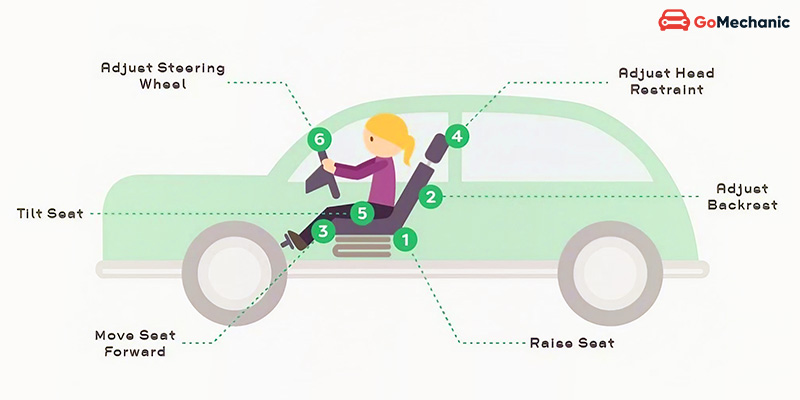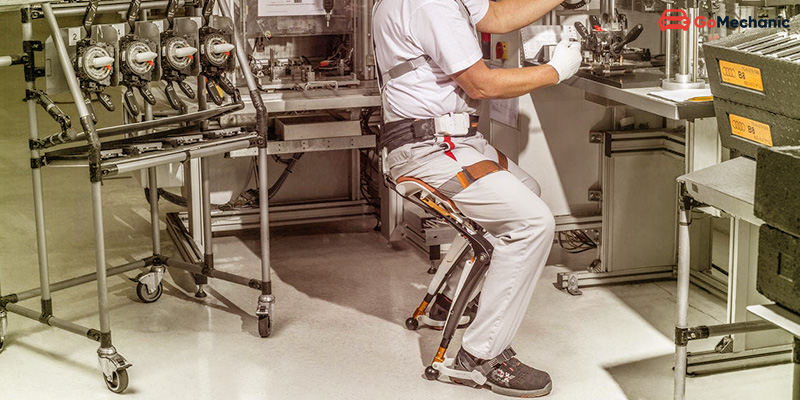Cars are not just machines; they are extensions of our daily lives. We are drawn to their sleek designs, powerful engines, and the latest technology. However, amidst the excitement of owning or driving a car, there’s a crucial aspect that often goes unnoticed – vehicle ergonomics. The way our cars are designed can significantly impact not only our driving experience but also our health and well-being. In this blog, we will explore the importance of automobile ergonomics, delving into how it influences driver health and why it’s essential for all car enthusiasts to consider.
Understanding Car Ergonomics
- What exactly is Car ergonomics?
Car ergonomics is a fascinating field that focuses on designing vehicles to fit the needs and capabilities of the human body. It’s all about creating a driving environment that promotes comfort, safety, and efficiency for both the driver and passengers.
- Importance of Ergonomics
Imagine driving a car that feels like it was tailor-made for you – where every control is within easy reach, the seats provide just the right amount of support, and visibility is crystal clear. That’s the magic of Vehicle ergonomics. It ensures that driving isn’t just a task but an enjoyable experience that minimizes discomfort and fatigue.
- Creating the Perfect Fit
Automobile ergonomics strives to find the perfect balance between form and function. It’s about designing cars that not only look good but also feel good to drive. From the placement of controls to the shape of the seats, every aspect of the car is carefully crafted to enhance the driver’s comfort and well-being.
Components of Vehicle Ergonomics

- Seat Design
One of the critical components of Vehicle ergonomics is seat design. A well-designed seat provides adequate support to the driver’s body, reducing the risk of discomfort and fatigue during long journeys.
- Controls and Interface Placement
The placement of controls and interfaces within the car cockpit is crucial for easy accessibility. From the steering wheel to the infotainment system, every element should be within reach without causing strain or distraction.
- Visibility and Line of Sight
Good visibility is essential for safe driving. Ergonomically designed vehicles offer optimal sightlines, minimizing blind spots and enhancing overall awareness on the road.
- Driving Posture
Maintaining the right driving posture is key to preventing musculoskeletal issues. Ergonomic cars provide adequate lumbar support and adjustable seating positions to help drivers find their ideal posture.
The Impact of Automobile Ergonomics on Driver Health
- Why does Automobile ergonomics matter for driver health?
Poorly designed vehicles can lead to a myriad of health problems for drivers. From back pain to neck strain, the consequences of prolonged discomfort behind the wheel can be severe and long-lasting.
- Long-term Health Implications
Neglecting ergonomics in vehicle design can lead to long-term health problems for drivers. Poor seating arrangements and awkward postures over time can cause chronic musculoskeletal disorders and other health issues. Also, discomfort and distraction from ergonomic problems can raise the risk of accidents and injuries on the road.
- Safety and Performance
Ergonomics significantly improve safety and performance on the road. Intuitive control layouts and ergonomic steering wheel designs allow drivers to respond swiftly and efficiently to changing road conditions and emergencies. Ergonomic design decreases the mental effort required to operate a vehicle, aiding drivers in making superior decisions and staying in control during challenging situations.
Innovations in Vehicle Ergonomics

- Adaptive Seating
Advanced technology in adaptive seating systems automatically adjusts seat settings according to the driver’s body dimensions, posture, and driving habits. These systems help in discomfort and lower the risk of musculoskeletal problems by offering customized support tailored to individual needs.
- Advanced Driver Assistance Systems (ADAS)
ADAS technologies, like lane-keeping assist, adaptive cruise control, and collision avoidance systems, boost vehicle safety and comfort by aiding drivers in different driving tasks. These systems use sensors and cameras to spot potential hazards and offer timely warnings or interventions, lessening driver workload and stress.
Addressing Common Health Issues
- Back Pain: A Common Complaint
Many drivers experience back pain due to inadequate lumbar support or poorly designed seats. Ergonomically designed cars prioritize spinal health, reducing the likelihood of backaches and discomfort.
- Neck Strain: Looking Out for Your Neck
Constantly craning your neck to see the road ahead can lead to neck strain and stiffness. Vehicles with adjustable headrests and optimized sightlines help alleviate this issue, allowing for a more relaxed driving experience.
- Fatigue and Stress: Feeling the Strain
Driving in an uncomfortable environment can increase fatigue and stress levels, affecting both physical and mental well-being. Ergonomic cars aim to minimize stressors, promoting a calmer and more enjoyable driving experience.
Future Trends in Vehicle Ergonomics
- Autonomous Vehicles and User-Driven Design
The rise of autonomous vehicles offers fresh chances for user-driven design, where vehicles autonomously adjust to passengers’ preferences and needs. Future autonomous vehicles might include biometric sensors, voice recognition systems, and personalized settings to craft a customized and comfortable driving experience for each occupant.
- Personalized Ergonomic Settings
As biometric sensing and artificial intelligence improve, future vehicles could provide personalized ergonomic settings that adjust automatically according to each driver’s preferences and physical traits. These personalized profiles enhance comfort and convenience by adapting seat positions and climate control settings, ultimately promoting driver well-being.
Conclusion
As we navigate the roads of the modern world, it’s essential to prioritize not just the performance of our vehicles, but also the comfort and health of those behind the wheel. Automobile ergonomics plays a crucial role in ensuring that drivers can enjoy a safe, comfortable, and stress-free journey every time they hit the road. Prioritizing driver health ensures not only safer journeys but also allows drivers to fully enjoy the pleasures of the open road, all while maintaining their physical comfort and health.





